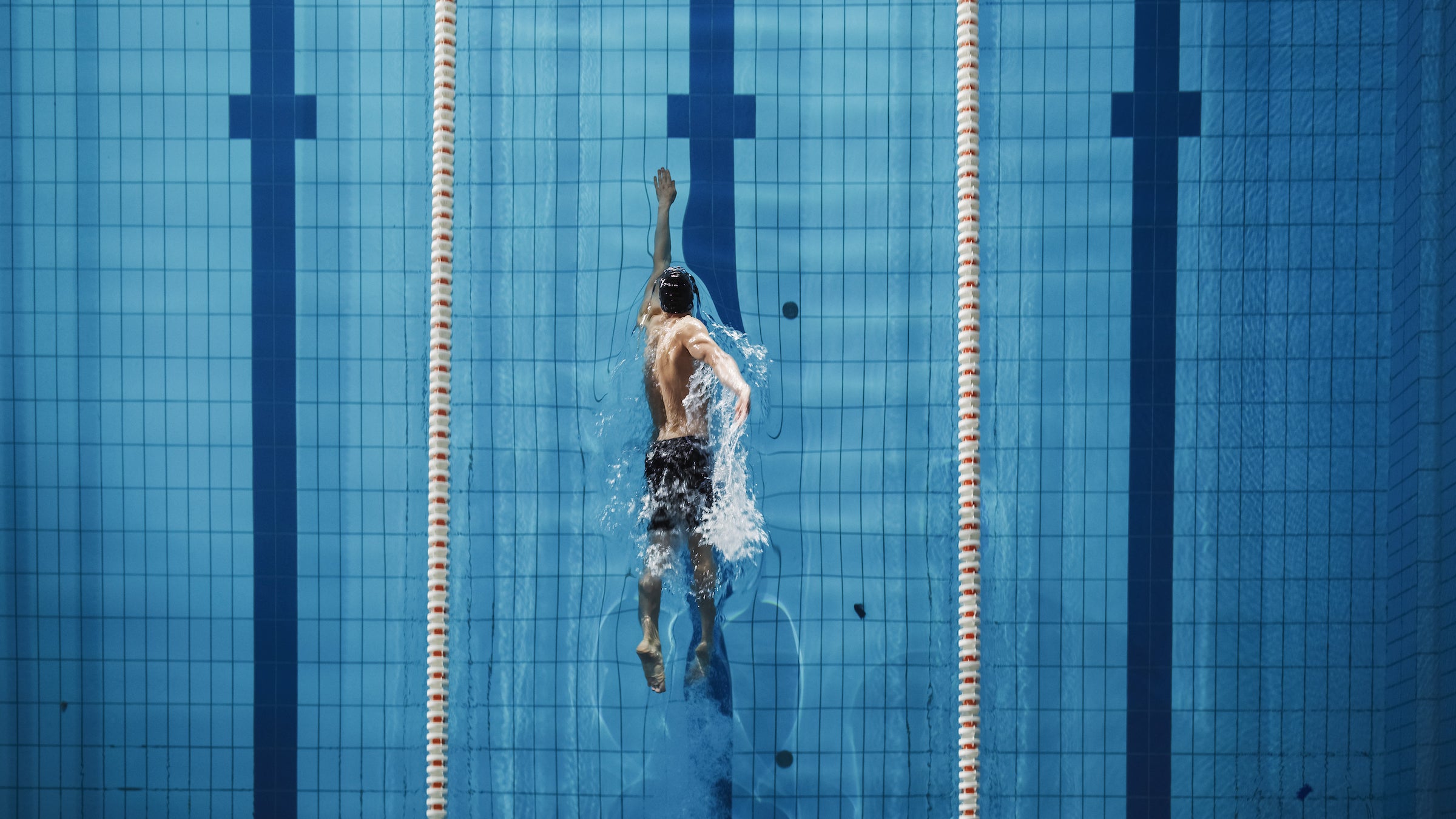How to Choose the Best Swim Drills For You

Aerial Top View Male Swimmer Swimming in Swimming Pool. Professional Athlete Training for the Championship, using Front Crawl, Freestyle Technique. Top View Shot (Photo: Getty Images)
Not all swim drills are created equal. Some drills are very effective at helping you improve your technique, others have little to no impact, and some drills can actually be counterproductive for your swim technique. So how can you tell the difference? There are three key attributes that I look for in great drills, especially when prescribing them to athletes who don’t have access to regular in-person coaching. For each attribute, I’ve included an example drill below to help illustrate the concept. While you may not be able to find many drills that are great examples of all three attributes, you want each drill you do to score as highly as possible in all three of these areas.
RELATED: How to (Finally) Become a Faster Swimmer
1. Look for drills that create clear feedback
A big challenge in learning new skills is that we don’t always have great live feedback. There is huge value to having a coach on deck giving you feedback as you swim—or even better, videoing you so you can see it yourself too. But as this isn’t always possible (and as you can’t see yourself while you swim), it’s often hard to know whether you are performing the drill correctly. However, this problem can be solved if you can find drills that are designed to create clear feedback. A drill like Paddle Cap Freestyle (outlined below) will provide you instant feedback as to whether you’re doing it correctly.
Paddle Cap Freestyle: When aiming to improve your breathing, place a paddle on the crown of your head and start to swim forward. Once you get moving, try to take a breath. Your goal is to keep the paddle on your head no matter what. If you can’t keep the paddle on your head when you breathe, you’re receiving very clear feedback that your head is either coming out of the water, pulling to the side, or both. If the paddle stays in place, you’re receiving very clear feedback as to whether you are performing the drill correctly, each and every stroke you take.
This video below shows how to execute it well.
2. Look for drills that create novel sensation
Sensation is the language of movement. We know we’re moving ideally based upon what we’re feeling, and we change our movements based upon what that feel as well. When learning to move differently, one of the key challenges is that we don’t know what a more optimal way of moving feels like (and this is often why it can be hard to learn to swim as an adult). Great drills put you in positions that almost guarantee that you will get novel sensation that clues you in to better ways of swimming.
Ball Float: Many triathletes do not have a good sense of how their lungs support their position in the water. They don’t know what it feels like it, and words are inadequate for helping someone understand the skill. For the ball float, stand in shallow water, then get into a very tight ball, as if you were aiming to do a cannonball. While you may sink initially, almost everyone will float back up to the surface. The sensation you will feel is that of being supported by your lungs, and that novel sensation can help you learn to leverage your flotation while swimming. This is a good example of creating a novel sensation that provides feedback.
3. Look for drills that are similar to freestyle
Unfortunately, improving your execution of a drill doesn’t always lead to improved freestyle. This is often because drills tend to take out a key element of freestyle in order to isolate another element. The problem is that everything changes once you add all those elements back together. The timing is different and your body position might feel different. The more similar a drill is to freestyle, the more likely it is that any improvements you make in the drill will lead to improvements in your freestyle.
Elevator Swim: Rather than working solely on isolated body position drills, try this: Start swimming freestyle with an extremely high head position. Over the course of a lap, lower your head further and further until you achieve a very low head position. At some point, you’ll find the head position that allows you to swim with the best body position. Because you’re already swimming freestyle, transitioning what you learn while doing the drill is very straightforward and it happens naturally.
RELATED: A Complete Guide to Triathlon Swimming
Andrew Sheaff is the swim coach at the University of Virginia.